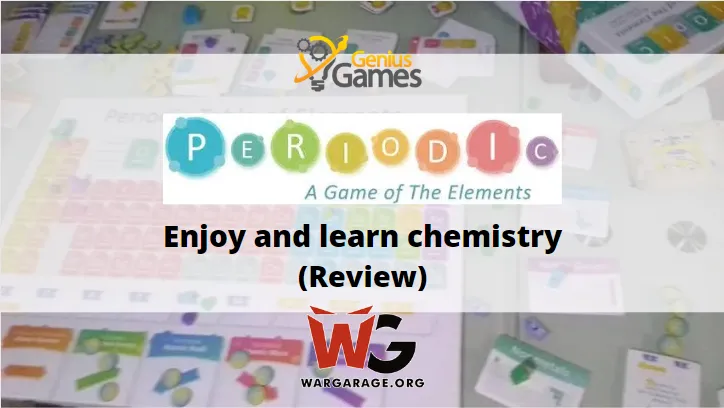Periodic: A game of the elements is a board game that allows us to have fun while learning or teaching some basic concepts of the periodic table.
[bgg id=257582]
Among the games of this publisher is Periodic: A game of the elements, I have the original version, but there is also the option to play it in Spanish language, thanks to Más Que Oca publisher.
What is it about?
As its name indicates, in this game we will be playing with the elements of the periodic table, in this board game we will be scientists investigating new elements and how they are related. Thus, each turn we will have four element cards inviting us to discover things such as the elements involved in the manufacture of stainless steel (Iron, Carbon and Chromium) or those used to make the control rods of nuclear reactors (Boron, Silver and Indian).
Investigations will take us through the periodic table using atomic numbers, mass, atomic radius, and ionization energy, but don’t worry, it really isn’t hard to play, however, by playing a few games you’ll probably be able understand these concepts and the relationship between them as you play.
Components
Contents:
• 32 goal cards
• 8 element group
cards
• 12 agenda cards
• 11 goal markers
• 28 lab tokens
• 30 research cubes
• 5 Erlenmeyer flask
tokens
• 5 microscope
tokens
• 12 award tiles
• 24 energy tokens
• 1 periodic table board
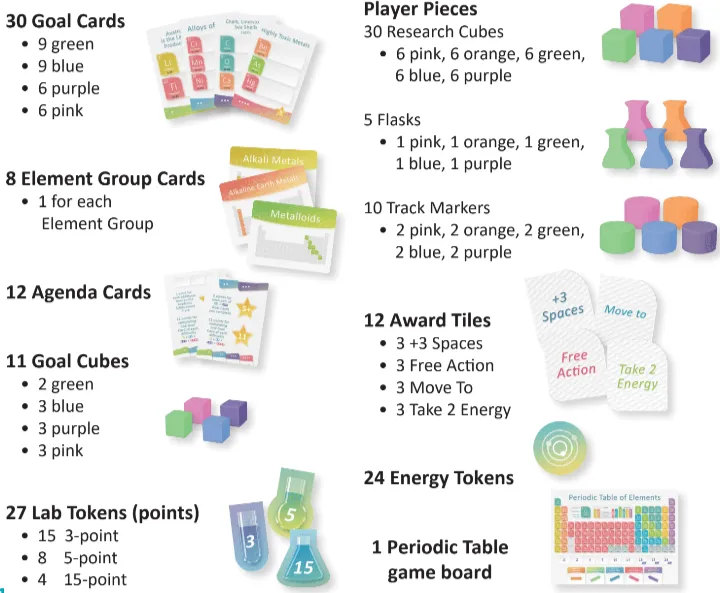
How to play Periodic: A game of the Elements?
Preparation
Place the board in the center of the table.
Shuffle each of the four goal decks and are place them upside down on the top edge of the board with the last card flipped face up. Award tiles are placed on each deck.
Mark each of the items on the goal cards with a corresponding colored and shaped token, an item may be required by more than one card so it may have more than one marker.
Shuffle the eight element group cards so that there is a semi-circle on each side of the board.
Stack the lab tokens and put them near the board.
Leave an energy token at each trend spot.
Distribute a set of 6 research cubes, an Erlenmeyer flask, and a microscope to each player of their chosen color.
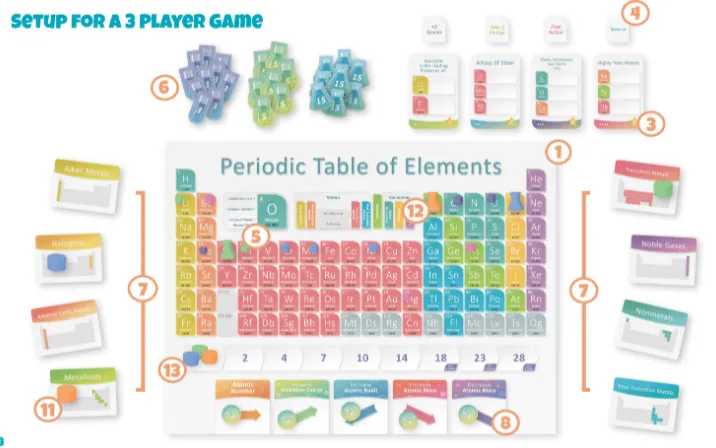
Determine the first player and he places his microscope on the first element group card, this will indicate his starting position, leaving his flask on the element with the lowest Atomic Number for that group. The other players, in a clockwise direction, will do the same, leaving one card in between, considering the eight cards as if they were in a circle.
Distribute energy tokens as follows, three for the first player, four for the second, five for the third, the fourth and fifth players will receive three and four, respectively, but will be rewarded in the next step.
Each player leaves their circular base marker on the Academic Record.
Deal three agenda cards to each player, each must choose one and return the rest.
The game
Mechanically the game is quite simple, we have three basic mechanics: Action Points, Grid Movement and Set Collection. Periodic: A game of the elements is played in turns, each turn has two phases.
Trend Activation Phase
- Use your energy to move your flask according to the chosen tendency(s), you can activate multiple tendencies on your turn or a single one multiple times if you wish, or activate a single tendency and take the energy tokens on it.
- Move your flask, up to five spaces, according to the movement allowed in the chosen trend.
- Discover items, if you end your move on an item that requires research.
Refresh Phase
- Remove the completed goal cards and keep them, along with the award if available.
- Assign Lab points to those who had some of the items researched but didn’t complete them.
- Advance the marker on the Academic Record.
Activating Trends
The first trend activation costs one energy point, the following ones will cost two points each activation. Each activation has a maximum of five slots and diagonal moves cost two energy points.

If you don’t have energy points you can activate one, and only one, tendency this turn and take the energy points that are assigned to it.
The four trends are:
Atomic number
It allows you to move to the right and left, it is the only tendency that allows you to go out on one edge of the table and continue on the other, for example if I am on Helium I can go to Lithium, at the other end of the board, in a single movement.
Increase Ionization Energy
Move your flask up and/or to the right.
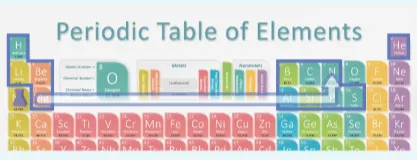
Increase Atomic Radius
shift your flask down and/or to the left
Increase Atomic Mass
You can move your flask down and/or to the right.
Decrease Atomic Mass
To move your flask up and/or left.
Discover/Research Items
To claim an item as researched, in Periodic: A Game of the Elements, you have to finish your move on it, it’s not enough to run over it. When you do, place one cube, and only one, of your color on the card you want to claim, if it has more than one marker you must spend at least one energy for each of them, for example using Increase/Decrease Atomic Number to move out of the element and back on top of it.
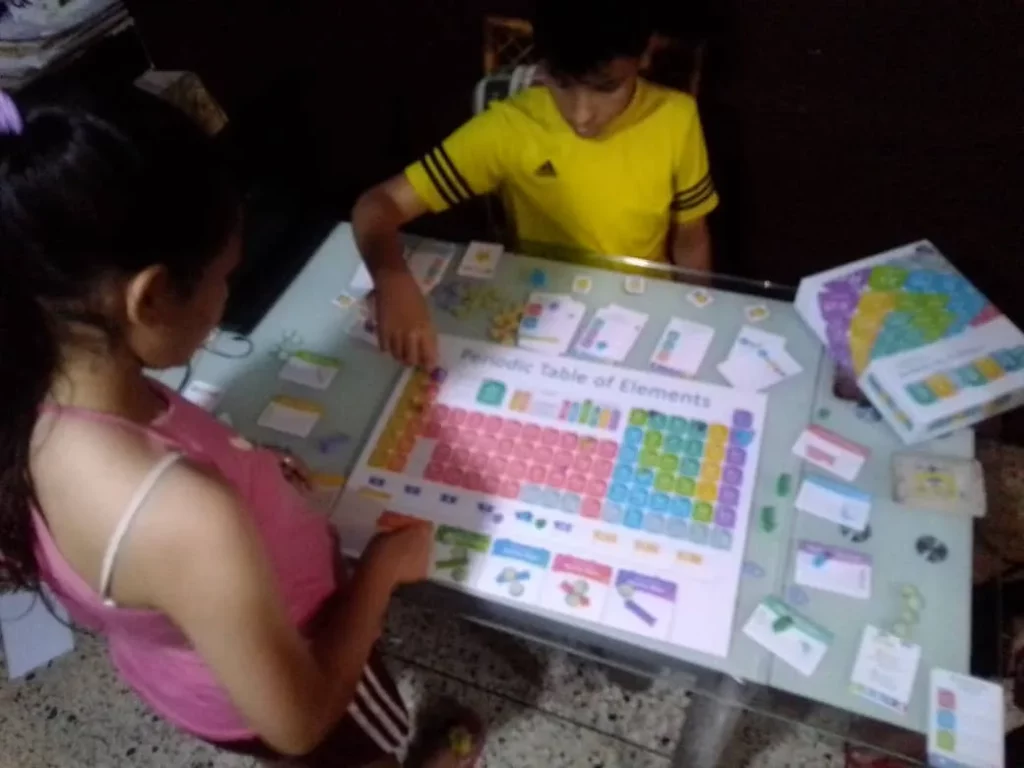
End of the Game
Endgame in Periodic: The element game is activated when one of the four Meta decks runs out, when this happens, each player after the one who activated the endgame, takes one last turn.
The winner will be the one who has the most points, this will depend on the Goals cards obtained, their place in the Academic Track, and their agenda.
Opinion on Periodic: A game of the elements
This is a game with simple mechanics, with a moderate strategic load, since you must seek to position yourself in the best way to maximize the use of your energy, as well as try to locate yourself in elements that allow you to advance your microscope on the element group cards, to earn points. But, Watch out! Simple does not mean boring, but quick to learn.
Whoever has the best strategy when moving their flask through the periodic table will surely win.
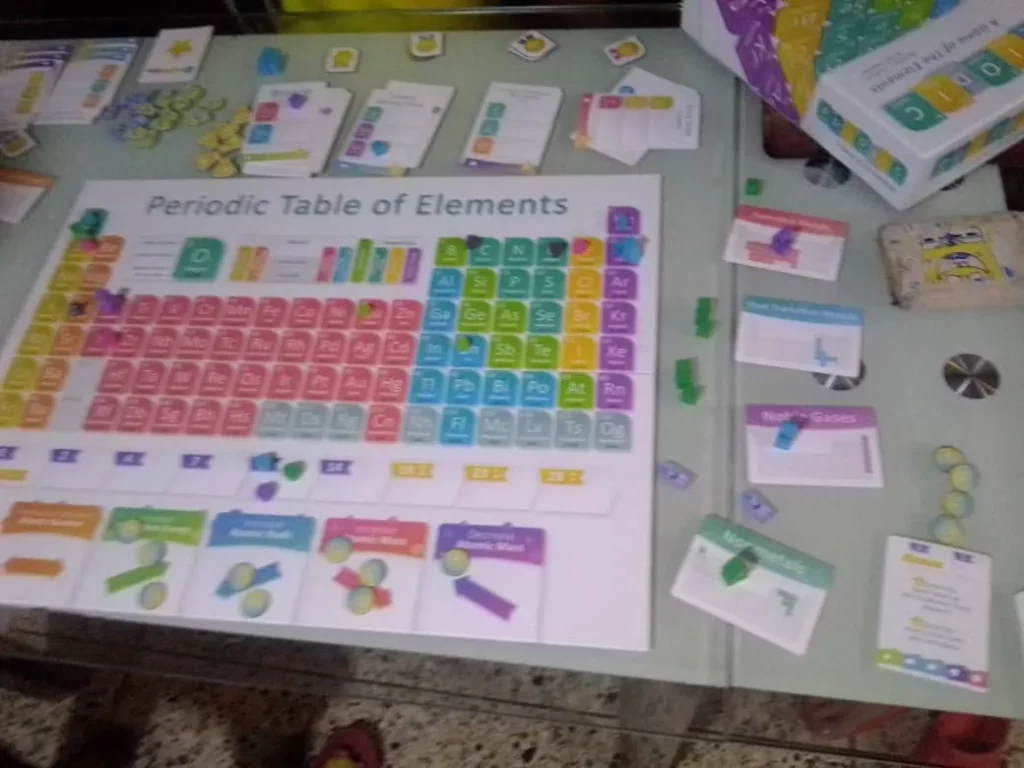
It is very remarkable that Periodic: A game of the elements, like other games from Genius Games, brings a supplement where they explain the science behind the game, how each mechanic is related to reality, which allows us to understand its design decisions and how the things works in real life.
It is worth mentioning the game do not focus on learning, its focus is in fun, but you can learn some concepts, as well as elements data through playing the game.
But, the best of all is that this game is a perfect introduction to chemistry , after playing some games with kids from first and second year of middle school, I explained to them what the atomic number was, the atomic mass and some other concepts that they grasped amazingly easy, I assume due to the relationship with the game mechanics.
Actually, I loved the possibility of teaching chemistry to children in such a fun way, if you have young people at home this game is almost mandatory, it’s fun and educational, you won’t regret it.
